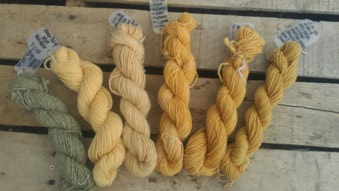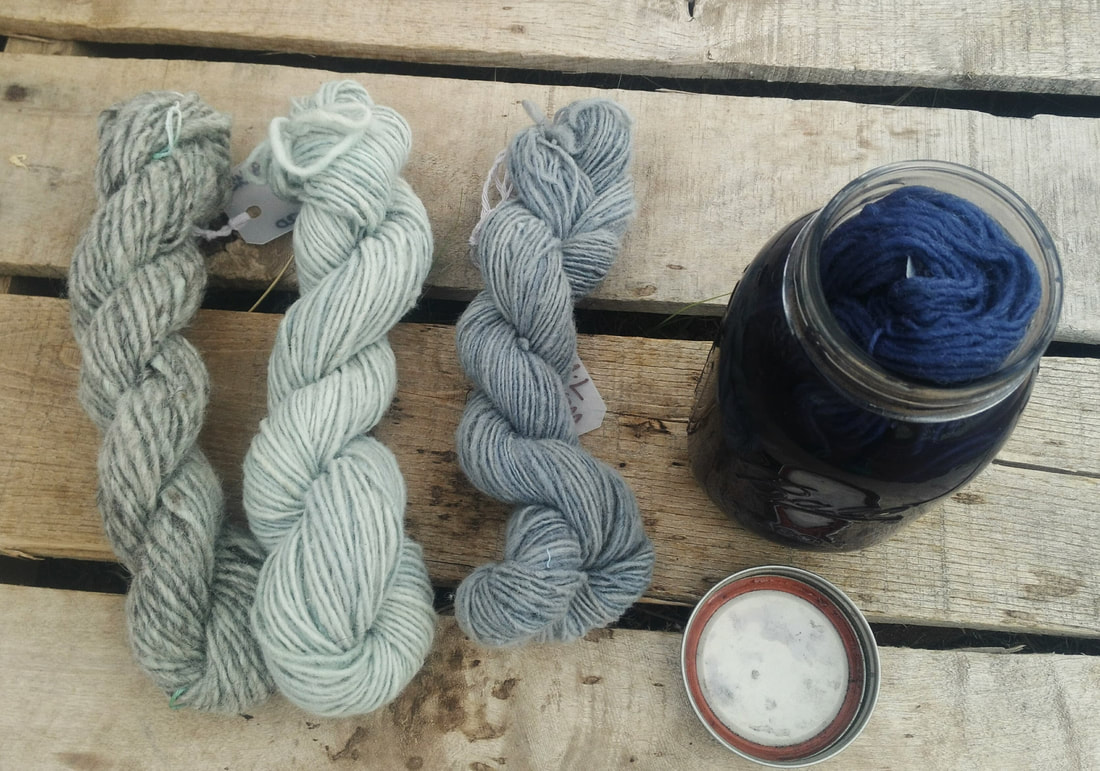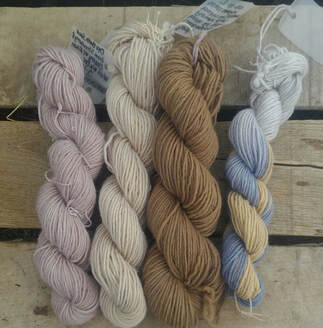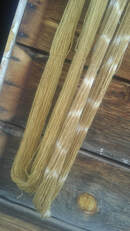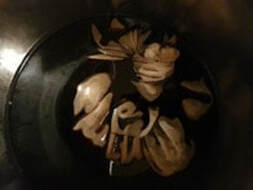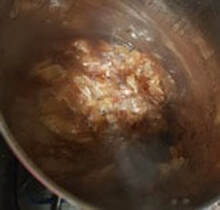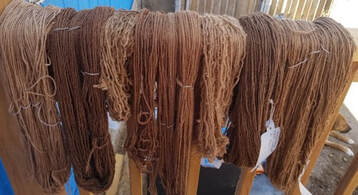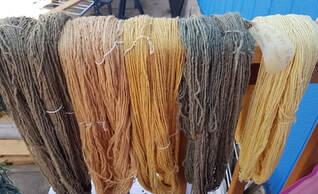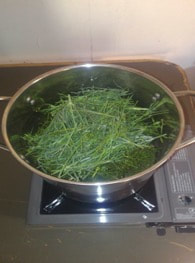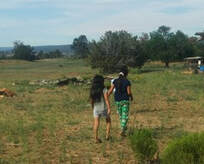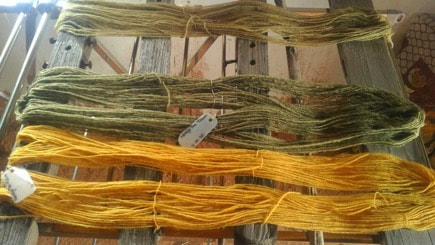Tamerra MartinNavajo Weaving BFA Student: CA315 Wool Processing II
I figured - why stop here?! So I added Annatto Seeds, something I found at the grocery store in the spice section. I didn’t know what to expect from this honestly. After letting that boil, I added another skein and that came out even brighter.
color. I immediately turned down the heat and added the skein of wool. I Waited for a bit and decided to let it set in a glass jar to see if the color would be better achieved that way. After a couple of days, I took it out and it came out more of an indigo color. It was not the color I was shooting for, but it is still an accomplishment because I’m learning the use of alum and how heat could also play a factor in getting the colors.
The last skein in the picture is one that I am very proud of. It is made with what was left of the cabbage dye bath and what was left of the flower dye bath....I let one side of the skein in the cabbage dye bath and the other end in the flower dye bath. I let it set this way overnight. By morning it created this variegated skein.
There are more other plant dyes that I am very interested in experimenting with. Thanks to our Professor Sarah Natani and her extensive knowledge in plant dying, I am confident in dying wool and experimenting more in the near future.
0 Comments
Sue V. BegayNavajo Weaving BFA Student, CA315 Wool Processing II
I prepared the black walnut skin with a pre-soaking. Pre-soaking is required because the black walnut is very hard. I had my black walnut soaking for one day and one night. I prepared the labels on the skein and wet the weft. For this project, I used heather gray and blanche white from Brown Sheep Company along side some of my hand spun wool. After my skeins and weft were labelled, I dipped them in the prepared boiling pots of water. The water I used is from the unconfined aquifer water from Narrow Canyon. All the dyeing is done with unconfined aquifer water. I repeated the same process for the yellow skin onions- although I did not have to pre-soak. For each dye, I made two groups: one set made with alum and another set without alum.
My experience with dyeing with yellow onion skin and black walnut was very exciting. The colors of the weft are gorgeous with both yellow onion skin and black walnut. I learned about the slight various of natural plants as well as the differences using machine spun vs hand spun wool. Ultimately, what my major take away this week is that the beauty and gorgeous colors that comes from Mother Earth are treasures. Watching how the color comes alive. 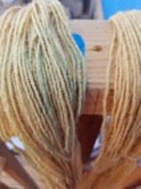 UGG - My fault - Sorry, wool! UGG - My fault - Sorry, wool! Here are some other practical take aways I learned this past week: Lesson Learned: The wool is still very hot even after two baths. Lesson Learned: Never mix a pre-dyed skein with your skein you wish to color. Lesson Learned: Be patient and let the colors work. BIG Lesson Learned: This is what not to do. I put in a white skein and put a sky-blue skein on top of it and the color transferred onto the white skein. I can still use this in my pictorial rug as a corn tassel or streaks in the skyline. One of a kind weft. I am very honored to be in this class even though we are distance learning. It was absolute great day of hands on activities and I am looking forward to another great lesson. But for now...I saved some of my black walnut and I'll be testing it out with some Navajo churro raw wool. Tamerra MartinNavajo Weaving BFA Student: CA315 Wool Processing II
In preparation of dying wool, I found it interesting that it was encouraged to recycle or repurpose materials. There’s really no need to go and purchase everything new. You just have to look around and see what you could use. A metal basket with bailing wire could be turned into a strainer or empty water/milk jugs could be used to make tags to label your skeins.
Once the tea was ready; we added the unbleached white wool and the heather gray wool...the colors that came from the first dye bath were very subdued. The second dye bath, when the alum mordant was added, the colors was very bright! The first dye lesson was a success! When seeing the colors that developed from this lesson, I couldn’t help but think about the many other plants on the land that serve a purpose. Whether it was a natural remedy for an ailment, or an essential item for a ceremonial reason or a utilitarian item; these plants served a purpose. I am very honored to be learning these ways and that I can share this with my helpers. We are already looking forward to the next plant dye session.
If you are interested in joining the Navajo Weaving BFA program in the fall, be sure to get in contact with Christine Ami (cmami@dinecollege.edu) or Crystal Littleben (cclittleben@dinecollege.edu). It's a one of a kind program - only offered here at Diné College! |
Categories
All
Archives
October 2021
|
SocialsALL PHOTOS IMAGES ARE COPYRIGHT PROTECTED. PHOTO IMAGES USE IS SUBJECT TO PERMISSION BY THE NAVAJO CULTURAL ARTS PROGRAM. NO FORM OF REPRODUCTION IS PERMITTED WITHOUT WRITTEN PERMISSION FROM THE NAVAJO CULTURAL ARTS PROGRAM. |
Featured Pages |

